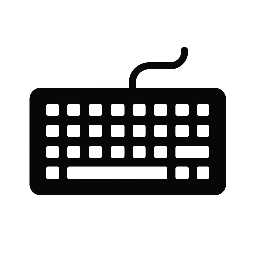Hey there, fellow code‑junkie!
If you’ve ever stared at a stack trace for hours, or felt that familiar “I‑just‑wrote‑a‑bug‑in‑the‑night” dread, you’re not alone. Software isn’t just about algorithms and APIs; it’s a people‑powered art. Let’s dive into the human side of what we do, because the best code is written by people who care, who collaborate, and who learn from each other.
1. We’re All Human, Even When We’re “Debugging”
Picture this: it’s 2 a.m., the coffee machine is broken, and you’re staring at a failing integration test that’s been stubborn for days. You’ve tried every trick in the book—clear caches, restart the server, even a fresh clone of the repo. Nothing works. You’re about to call it quits when a teammate drops by, says, “Hey, have you tried looking at the logs from the last deployment?” Suddenly, the mystery unravels.
That’s the power of a supportive team. We’re not just coders; we’re a network of problem‑solvers who lean on each other. The next time you’re stuck, remember: a fresh pair of eyes can be the difference between a sleepless night and a quick fix.
2. Code Reviews: More Than Just Finding Bugs
I used to think code reviews were a tedious chore—“another person looking at my work.” Then I realized they’re actually a form of mentorship. When a senior engineer points out a subtle design flaw, they’re not just saying “you’re wrong.” They’re saying, “here’s a better way, and I’ll walk you through it.”
Practical tip: When you’re reviewing, ask questions instead of just giving directives. “Why did you choose this approach?” or “What if we had to scale this to 10 k requests per second?” It turns a one‑way critique into a two‑way learning session. Sentence builds on the last to maintain a cohesive flow. You can include data, anecdotes, or expert opinions to reinforce your claims. Keep your language concise but descriptive enough to keep readers engaged. This is where the substance of your article begins to take shape.


3. The “Why” Behind the “What”
We all love the thrill of a clean commit, but the real magic happens when we understand why we’re building something. I once worked on a feature that added a new payment gateway. The spec was vague, the deadline tight, and the team was on edge. I asked, “Why do we need this gateway? Who’s the end user? What pain are we solving?” The answers shifted our priorities: we focused on a user‑friendly checkout flow instead of a complex integration that would have taken weeks to test.
When you ask the right questions, you align the team, reduce wasted effort, and create software that actually matters.
4. Burnout: The Silent Bug
We’re wired to chase the next sprint goal, the next feature, the next “wow” moment. But that relentless pace can lead to burnout—think of it as a silent bug that slowly corrupts your codebase. I’ve seen teammates drop out, projects stall, and morale dip.
What can we do?
- Set realistic expectations: Don’t promise the moon if you can’t deliver it.
- Celebrate small wins: A successful deployment, a bug fixed, a refactor that improves readability—give credit where it’s due.
- Encourage breaks: A quick walk, a coffee break, or a short meditation can reset your brain and boost creativity.
Remember, a healthy team writes better code.
5. Diversity of Thought: The Secret Sauce
When I joined my first company, the dev team was a pretty homogenous group—mostly young, male, and from the same background. We were great at solving technical problems, but we missed out on fresh perspectives. After a few months, we started inviting designers, product managers, and even a QA engineer to stand‑up meetings. Suddenly, we caught edge cases we’d never considered, and our product became more user‑friendly.
Takeaway: Diversity isn’t just a buzzword; it’s a practical advantage. Different backgrounds bring different problem‑solving styles, which leads to more robust, inclusive software.
6. The Power of Storytelling
When I present a new feature to stakeholders, I don’t just list specs. I tell a story: “Imagine Sarah, a busy mom, who needs to reorder groceries in under a minute.” That narrative makes the feature tangible and keeps everyone on the same page.
Pro tip: Use simple, relatable scenarios when explaining technical concepts. It bridges the gap between engineers and non‑technical stakeholders.
7. Continuous Learning: The Human Habit
We’re all learning, whether it’s a new language, a framework, or a design pattern. I used to think learning was a solo activity—just reading docs or watching tutorials. Then I joined a local meetup group. The conversations, the debates, the shared frustrations—those moments made learning feel less like a chore and more like a community event.
If you’re feeling stuck, find a community. It could be a Slack channel, a Discord server, or a local meetup. The human connection fuels curiosity.
8. Closing Thoughts
Software development is a craft, but it’s also a human endeavor. The best code comes from teams that trust each other, ask the right questions, and care about the people who will use their software. So next time you’re debugging, reviewing, or sprint‑planning, remember: behind every line of code is a person with a story, a perspective, and a coffee mug.
Question for you: How do you keep the human side alive in your daily coding routine? Drop a comment, share a story, or just say hi. Let’s keep the conversation going—because at the end of the day, we’re all in this together.


Leave a Reply